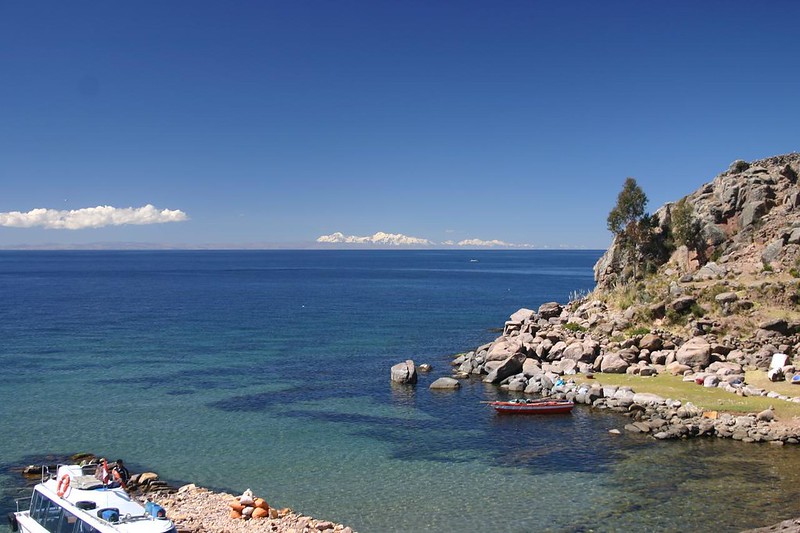Next morning we arrived at the port for 8am after having had a small breakfast at the hotel. There were an American couple, one of whom was a fighter pilot who we sat and talked to for a while whilst we waited for boat to be ready. Once we set off it was only a short sail round Lake Titicaca to the Islas de Uros where we made landfall on one of the floating islands. Whilst there the locals taught us about their culture and way of life and demonstrated how they used the tall totora reeds to maintain the island and to craft everything they need.
It was quite a strange feeling to be walking around on an island that was dry, yet still allowed your feet to sink into it – the reason for this is that the totora reeds compact as you stand on them of course. Each of the many floating islands in this region are actually anchored in place to make sure that they don’t float away. Some of the islands don’t like tourists, but those that do use the money from tourists to pay for medicine and anything they need from the mainland. The reason they don’t get this through the government is that they are not considered to be part of community – they’re on their own so they don’t pay tax either. On this island I bought a hand made tapestry for $30.
We then took a totora reed boat to one of the other islands which is hand powered so we had time to admire the other floating islands as we passed them. After making landfall on the next island we didn’t hang around long and we got back onto our tour boat which then took about 2 hours to get to a “proper” island named Isla Taquile.
This island was quite picturesque with it’s clear blue water around it, palm trees and very few natives. Whilst we were on this island the natives cooked us food which consisted of potatoes and fish, followed by a demonstration of their dancing and an explanation of how their culture works and how it differs to elsewhere in Peru.
The return journey somehow only took 2 hours, and I spent some of it relaxing on the roof of the boat but after awhile it does get a little too cold. The reason for this is because Lake Titicaca is the highest navigable lake in the world at 3,820 metres (12,530 feet) above sea level; so obviously the air would be a little cooler.

